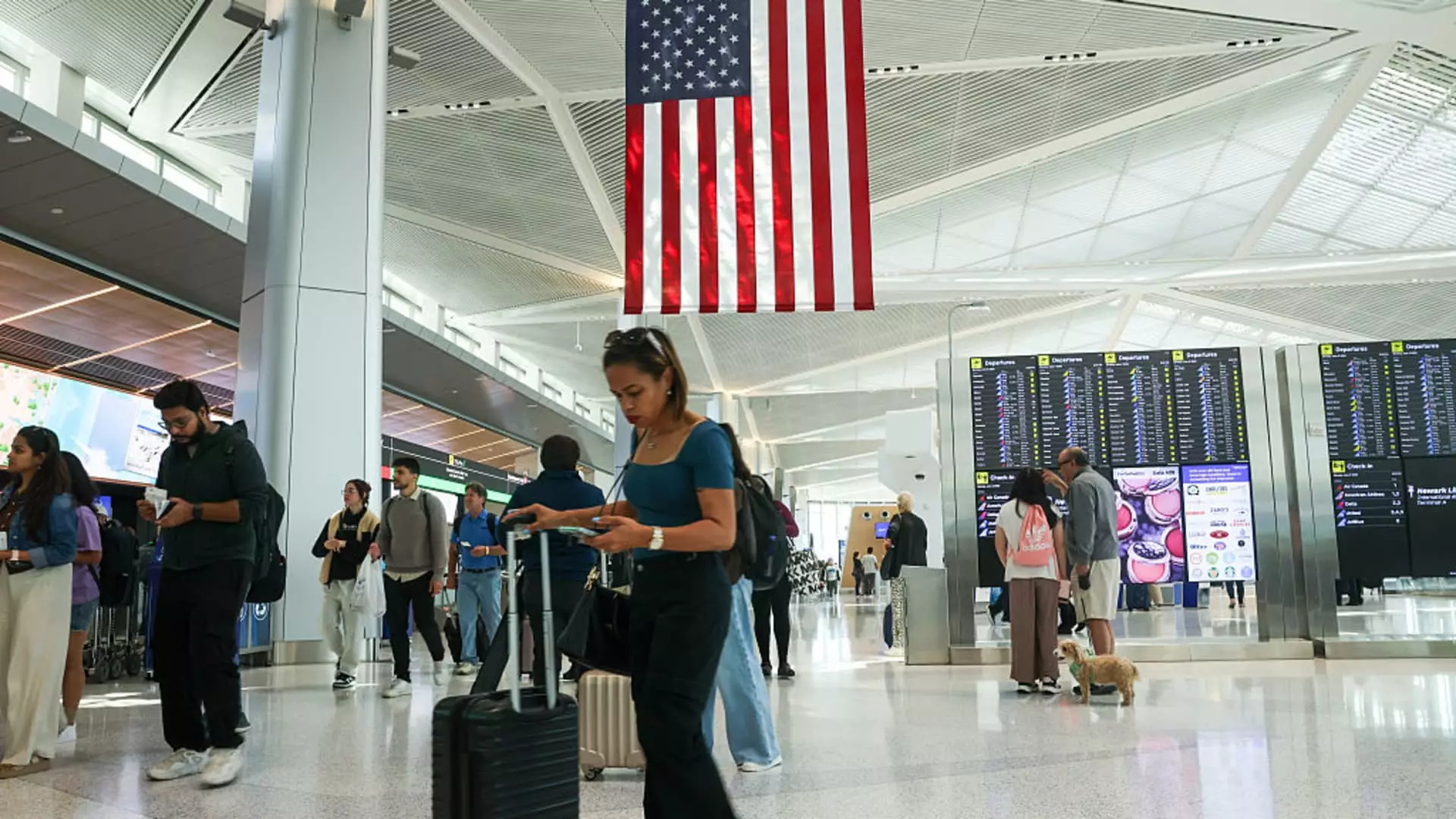As millions of Americans prepare for the July 4 holiday escape, there is a fragile veneer of optimism that conceals a much more troubling industry landscape. Airlines, traditionally buoyed by summer travel, are experiencing a paradox — robust passenger numbers on peak days are masking a broader malaise that threatens their future viability. Despite the hefty waves of travelers crossing airports, this seasonal boom merely tempers the underlying financial strain; it does not resolve it. The recent surge in passenger flow—expected to surpass 18.5 million travelers—offers a temporary respite, but it’s unlikely to stave off the storm brewing in the airline industry’s core health.
Falling Fares and the Mirage of Low Costs
Airfare prices, now averaging an unremarkable $265 round-trip domestically, highlight the industry’s desperate attempts to attract discretionary travelers amid challenging economic conditions. This figure, which marks a 3% decline from last year, appears as a positive indicator but, in truth, signals far more than it reveals. Lower fares are not a sign of vitality but of desperation, an industry trying to fill seats without the sustainability to maintain profitability. Airlines are slashing prices not to attract new loyal customers but to merely keep their planes flying. The “summer on sale” mentality is little more than a band-aid on a festering wound, a recognition that the industry’s core demand is weakening.
The Cloud of Uncertainty Looms Large Over the Industry
The future remains clouded with economic and geopolitical uncertainties that undermine confidence in a post-pandemic travel rebound. With airlines like Delta and American Airlines pulling their forecasts for 2025, the industry’s leadership is acknowledging a harsh truth: the recovery is neither straightforward nor guaranteed. Tariffs, fluctuating foreign visitor numbers, and geopolitical tensions are creating a tumultuous environment that saps the industry’s long-term prospects. Airlines are now strategizing around prudent capacity cuts, especially during off-peak periods, a recognition that excess capacity only exacerbates losses.
Profitability: A Summer Fantasy, a Year-round Nightmare
The all-too-familiar seasonal pattern of profit hinges on the second and third quarters, yet even this radiance dims in 2025. Airlines are tightening their belts—cutting unprofitable routes and trimming capacity—yet those measures are merely most visible symptoms of a more profound malaise. The demand that once fueled these profits has disappointed industry executives and investors alike. Economic indicators such as employment data and consumer spending paint a more sober picture: despite a resilient macroeconomic environment, air travel demand remains tepid at best. The disconnect between strong travel numbers during peak days and the broader decline in demand underscores the fragility of this industry’s recovery.
The International Market: Glimmers of Hope or False Dawn?
On the international front, carriers like Delta and United see some relief, with increased flights and slightly lower fares to Europe and Asia. Yet, these gains are modest and fragile. The drop of nearly $100 in transatlantic fares from last year and a 13% decrease for Asian routes do little to suggest a robust recovery. Instead, they represent a market that is correctionally adjusting, not expanding. The international travel market, once a bright spot for major carriers, is now fundamentally constrained by economic headwinds and lingering health concerns. What once appeared as a promising avenue has become just another segment struggling to sustain profitability.
A Central-Right Perspective: A Call for Realistic Policies and Market Discipline
From a center-right liberal vantage point, it is clear that the industry’s woes are largely self-inflicted. Excess capacity and unsustainable fare wars are symptoms of an industry unwilling to accept the hard discipline of market forces. The government’s role should be limited to removing regulatory hurdles rather than propping up an outdated business model that overexpanded during easy money years. Instead, airlines must prioritize operational efficiency, grounded in rational capacity management and innovation, to regain their footing. Continuing to rely on fare slumps and expansion fantasies only delays the inevitable restructuring needed for a sustainable future.
As the summer travel season shines briefly, the true picture of the airline industry’s health remains bleak. Short-term demand spikes mask a fundamental lack of consumer confidence and profitability in the long term. Until the industry embraces necessary reforms and accepts the cooling reality of a sluggish global economy, its prospects will remain uncertain—fragile and precarious at best.

